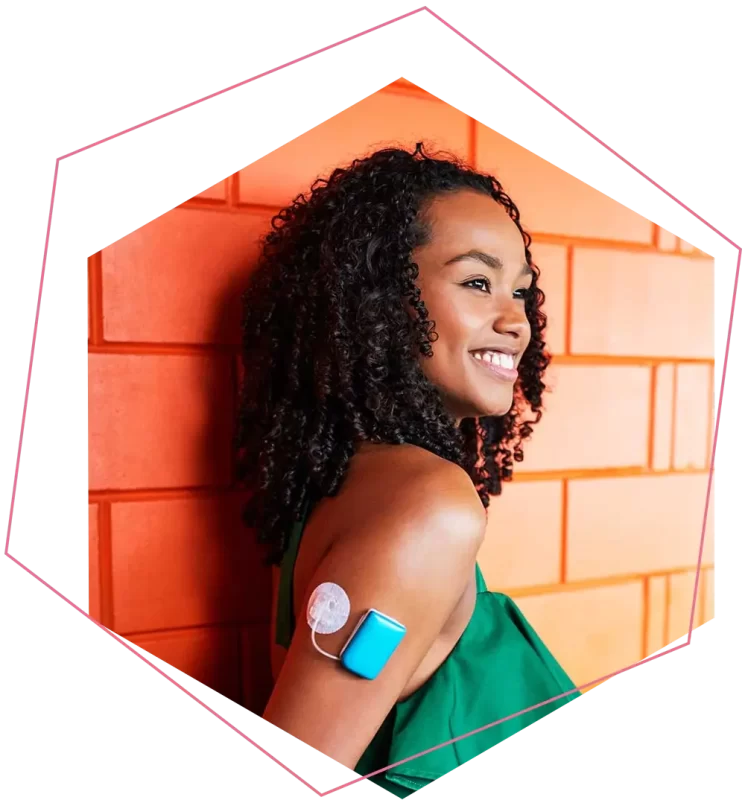ViCentra B.V., the company behind Kaleido, one of the world’s smallest, lightest insulin patch pump systems for managing type 1 diabetes, is pleased to announce the launch of a Hybrid Closed Loop system for automated insulin delivery. This system delivers insulin by using the DBLG1 algorithm, which receives input from the Dexcom G6 Continuous Glucose Monitoring (CGM) sensor.
It combines the convenience of the Kaleido insulin pump with two market-leading innovations designed by Diabeloop and Dexcom to create a Hybrid Closed Loop system for managing type 1 diabetes which is flexible, self-learning and easy to use.
Frans Cromme, Chief Executive Officer of ViCentra, said: “We aim to deliver the best user experience as well as excellent clinical results with our Kaleido insulin pump and our partners. Kaleido with DBLG1 and Dexcom G6 improves users’ Time in Range by 16.7%1, an achievement that should bring real benefits to people with type 1 diabetes. We are proud to deliver this game changing technology via a beautiful and small device, as we feel people deserve this when they need to rely on a medical device 24/7.”
Inge Van Boxelaer, endocrinologist at AZ St-Lucas Ghent hospital, remarked: “I love seeing ViCentra trying to make these people’s lives a little better. If I were a person with diabetes, I would be incredibly open to such a small, innovative and cheerfully coloured Kaleido insulin pump which is perfectly formed and discreet.”
Nienke Rutgers, a person with Type 1 diabetes, commented: “Kaleido gives me an undisturbed life and is flexible in all situations during the day. I can wear it directly on my body and I do not notice it. Being even less preoccupied with diabetes is great, I do not have to focus on the condition, and I can get on with daily activities. It is super nice also that Kaleido comes with a well-known product like DBLG1.”
Kaleido users can wear their pump as a patch or place it in their pocket at their own discretion. The system comes with two durable pumps that are rechargeable, eliminating the need to dispose of the pump every 3 days as other patch pumps do. It is available in 10 bright colours and provides the ability to pause or take the pump off for intermittent breaks.
Diabeloop’s DBLG1 is a system deploying a well-known algorithm that is used by 10,000+ users2 in Europe already. The system draws on real-time glucose data, reducing hypoglycaemia by more than 50%3 and using personalised parameters and self-learning to adjust Kaleido’s insulin delivery for an optimised management of type 1 diabetes. DBLG1 algorithm considers the user’s glucose levels provided by the Dexcom G6 Continuous Glucose Monitor (CGM) alongside inputs on meals and activities to determine the insulin delivery. Users and healthcare professionals have real-time access to their data insights via automated transfer to the cloud platform YourLoops.
ViCentra is launching the Hybrid Closed Loop system in Germany, the Netherlands and France with its commercial partner Diabeloop. Roll-out to additional countries which include the UK and Italy is planned for 2024.
Stephane Majerus, Chief Executive Officer of Diabeloop, commented: “We are proud to extend our partnership with ViCentra, home of Kaleido, offering people with type 1 diabetes a new level of options in the management of their diabetes. This alliance between Diabeloop’s algorithm technology and the ViCentra pump aims to offer people with diabetes the benefits of the Kaleido design combined with our highly performing and proven algorithm. Diabeloop’s ultimate goal remains to make available the most advanced solutions to improve the quality of life of people with diabetes, enabling them to devote more time to their passions and daily lives.”
*If your glucose alerts and readings from the G6 do not match symptoms or expectations, use a blood glucose meter to make diabetes treatment decisions.
1 Amadou, Coralie, Sylvia Franc, Pierre-Yves Benhamou, Sandrine Lablanche, Erik Huneker, Guillaume Charpentier, and Alfred Penfornis. 2021. “Diabeloop DBLG1 Closed-Loop System Enables Patients With Type 1 Diabetes to Significantly Improve Their Glycemic Control in Real-Life Situations Without Serious Adverse Events: 6-Month Follow-Up.” Diabetes Care 44(3):844–46. doi: 10.2337/dc20-1809.
2 English Portal – Diabeloop: interoperable self-learning diabetes management solutions (cea.fr)
3 Benhamou, Pierre-Yves, Sylvia Franc, Yves Reznik, Charles Thivolet, Pauline Schaepelynck, Eric Renard, Bruno Guerci, Lucy Chaillous, Celine Lukas-Croisier, Nathalie Jeandidier, Helene Hanaire, Sophie Borot, Maeva Doron, Pierre Jallon, Ilham Xhaard, Vincent Melki, Laurent Meyer, Brigitte Delemer, Marie Guillouche, Laurene Schoumacker-Ley, Anne Farret, Denis Raccah, Sandrine Lablanche, Michael Joubert, Alfred Penfornis, and Guillaume Charpentier. 2019. “Closed-Loop Insulin Delivery in Adults with Type 1 Diabetes in Real-Life Conditions: A 12-Week Multicentre, Open-Label Randomised Controlled Crossover Trial.” The Lancet Digital Health 1(1):e17–25. doi: 10.1016/S2589-7500(19)30003-2.

